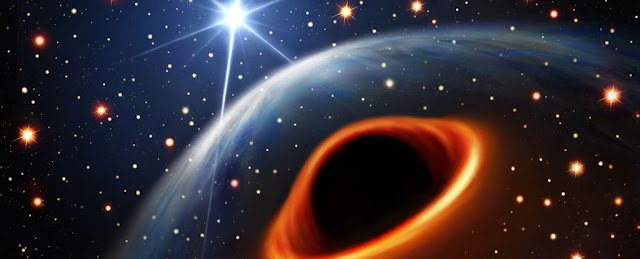The edges of the Milky Way are home to an odd phenomenon.
A millisecond pulsar and a very compact, dense object have been discovered by scientists in a star cluster that is skimming the outer edges of the galaxy. The object is trapped in an orbital dance. According to others, the mystery object could only be one of two things: a black hole or a neutron star, but discovering either one would be remarkable.
It might be the heaviest of its sort that we have ever observed if it is a neutron star. It’s the lightest black hole of its sort if that’s what it is.
Its mass is equivalent to 2.09 to 2.71 Suns, placing it near the lower end of the lower mass gap, a region of compact objects that is between 2.2 and 5 solar masses and where relatively few black holes or neutron stars have ever been found.
Astrophysicist Ben Stappers of the University of Manchester said, “Either possibility for the nature of the companion is exciting.” “A pulsar-black hole system will be an important target for testing theories of gravity and a heavy neutron star will provide new insights in nuclear physics at very high densities.”
Black holes and neutron stars are closely linked. Both of them are extremely dense objects that are created when the core of a big star collapses due to gravity.
The mass makes a difference. The mass of a neutron star can reach around 2.3 times that of the Sun. The principle known as degeneracy pressure, which states that two or more particles of the same quantum kind cannot occupy the same state, including a physical space, keeps it from collapsing entirely.
However, a neutron star’s interior is as densely packed as it gets; the star is comparable to a single, massive atomic nucleus.
However, even degeneracy pressure cannot stop further collapse if the mass is added. Therefore, more massive cores ought to eventually collapse into black holes—at least in theory.
The upper limit for the mass of a neutron star is approximately 2.3 Suns, yet very, very few black holes with masses less than 5 solar masses have been found. The decreased mass gap is the result of undetected measurements between the numbers.
An international team of researchers led by astrophysicists Ewan Barr and Arunima Dutta of the Max Planck Institute for Radio Astronomy discovered the object by examining a peculiar millisecond pulsar known as PSR J0514-4002E, which is situated in the star cluster NGC 1851, approximately 54,000 light-years away from the galactic center.
The presence of an unknown binary companion on a 7.44-day orbit with the pulsar was discovered by radio data gathered by the MEERKat array in South Africa. The researchers were interested in learning more about this item.
You see, millisecond pulsars are very fast-spinning neutron stars. They release radio waves at exact intervals while they spin. PSR J0514-4002E pulses like static, spinning 170 times per second. Astronomers can utilize the pulsar’s extremely accurate timing to detect minute fluctuations in the pulses, which they can then use to determine the pulsar’s characteristics, distance, and any binary companions.
“Think of it like being able to drop an almost perfect stopwatch into orbit around a star almost 40,000 light years away and then being able to time those orbits with microsecond precision,” Barr explains.
The researchers computed the mass of the system, the pulsar’s mass, and the distance to PSR J0514-4002E using this pulsar timing data. They calculated the mass of the mysterious item by deducting the pulsar’s mass.
The item is too large to be a white dwarf, which is a compact object smaller than neutron stars on the dead star scale, yet it is too dim to be a main-sequence star. The only two options left are a black hole or a neutron star.
Though it’s hard to tell which one it is right now, scientists think it’s the result of a prior merging of two neutron stars. A 2.6 solar-mass particle was produced by a similar collision that was discovered several years ago utilizing gravitational waves. This most recent discovery has the potential to be a larger neutron star, with an upper limit of 2.76 solar masses. If neither is a black hole after all.
The researchers are determined to reveal its identity now that it has been discovered.
Dutta asserts, “We’re not done with this system yet.” “Uncovering the true nature of the companion will be a turning point in our understanding of neutron stars, black holes, and whatever else might be lurking in the black hole mass gap.”
The discovery has been published in Science.



